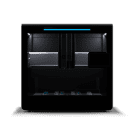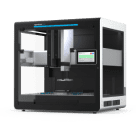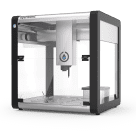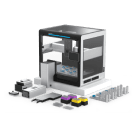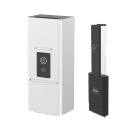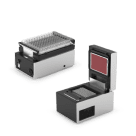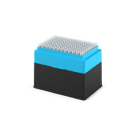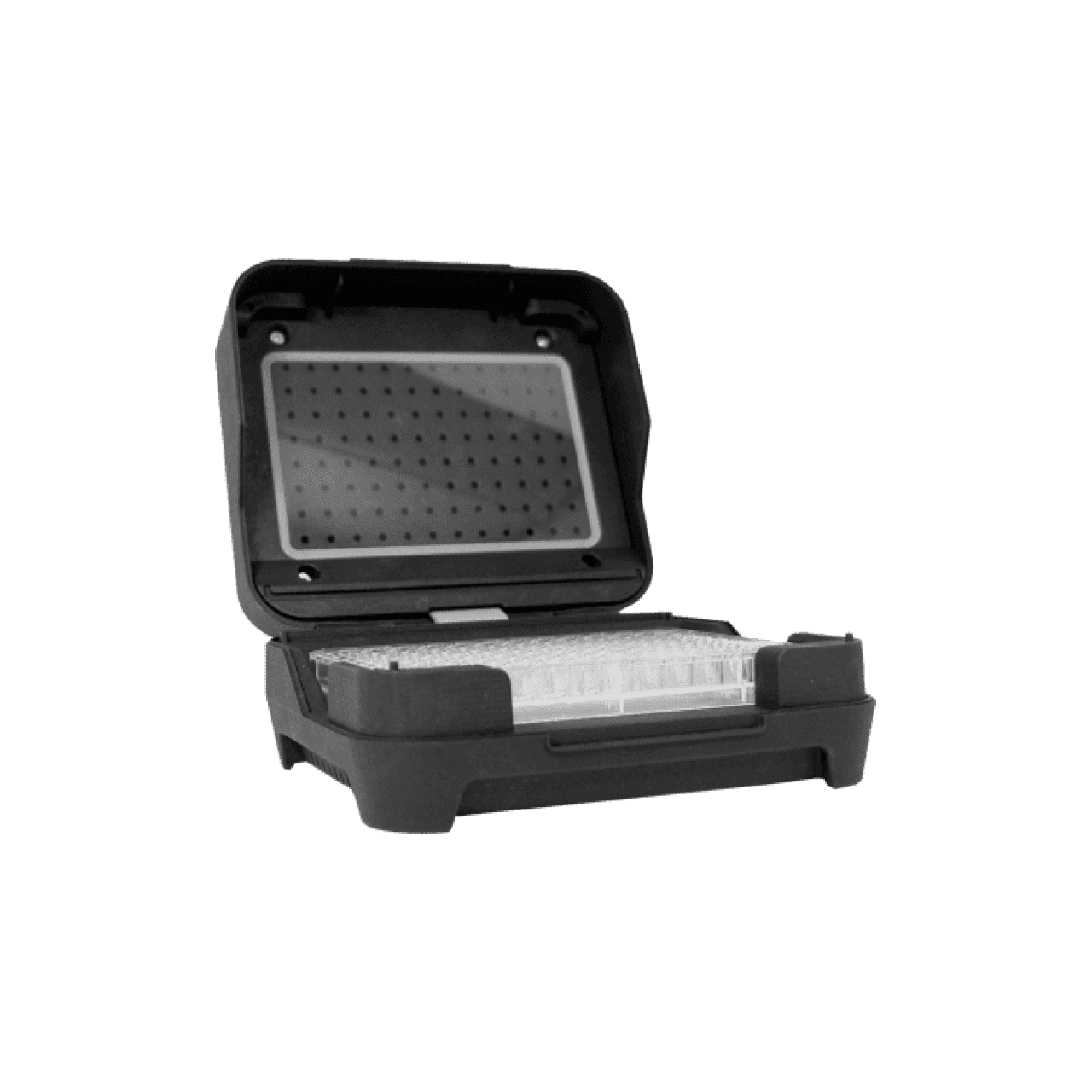Manipulating Pipette Tips¶
Your robot needs to attach a disposable tip to the pipette before it can aspirate or dispense liquids. The API provides three basic functions that help the robot attach and manage pipette tips during a protocol run. These methods are InstrumentContext.pick_up_tip(), InstrumentContext.drop_tip(), and InstrumentContext.return_tip(). Respectively, these methods tell the robot to pick up a tip from a tip rack, drop a tip into the trash (or another location), and return a tip to its location in the tip rack.
The following sections demonstrate how to use each method and include sample code. The examples used here assume that you’ve loaded the pipettes and labware from the basic protocol template.
Picking Up a Tip¶
To pick up a tip, call the pick_up_tip() method without any arguments:
pipette.pick_up_tip()
When added to the protocol template, this simple statement works because the API knows which tip rack is associated with pipette, as indicated by tip_racks=[tiprack_1] in the load_instrument() call. And it knows the on-deck location of the tip rack (slot D3 on Flex, slot 3 on OT-2) from the location argument of load_labware(). Given this information, the robot moves to the tip rack and picks up a tip from position A1 in the rack. On subsequent calls to pick_up_tip(), the robot will use the next available tip. For example:
pipette.pick_up_tip() # picks up tip from rack location A1
pipette.drop_tip() # drops tip in trash bin
pipette.pick_up_tip() # picks up tip from rack location B1
pipette.drop_tip() # drops tip in trash bin
If you omit the tip_rack argument from the pipette variable, the API will raise an error. In that case, you must pass the tip rack’s location to pick_up_tip like this:
pipette.pick_up_tip(tiprack_1["A1"])
pipette.drop_tip()
pipette.pick_up_tip(tiprack_1["B1"])
In most cases, it’s best to associate tip racks with a pipette and let the API automatically track pickup location for you. This also makes it easy to pick up tips when iterating over a loop, as shown in the next section.
New in version 2.0.
Automating Tip Pick Up¶
When used with Python’s range class, a for loop brings automation to the tip pickup and tracking process. It also eliminates the need to call pick_up_tip() multiple times. For example, this snippet tells the robot to sequentially use all the tips in a 96-tip rack:
for i in range(96):
pipette.pick_up_tip()
# liquid handling commands
pipette.drop_tip()
If your protocol requires a lot of tips, add a second tip rack to the protocol. Then, associate it with your pipette and increase the number of repetitions in the loop. The robot will work through both racks.
First, add another tip rack to the sample protocol:
tiprack_2 = protocol.load_labware(
load_name="opentrons_flex_96_tiprack_1000ul",
location="C3"
)
Next, change the pipette’s tip_rack property to include the additional rack:
pipette = protocol.load_instrument(
instrument_name="flex_1channel_1000",
mount="left",
tip_racks=[tiprack_1, tiprack_2],
)
Finally, iterate over a larger range:
for i in range(192):
pipette.pick_up_tip()
# liquid handling commands
pipette.drop_tip()
For a more advanced “real-world” example, review the off-deck location protocol on the Moving Labware page. This example also uses a for loop to iterate through a tip rack, but it includes other commands that pause the protocol and let you replace an on-deck tip rack with another rack stored in an off-deck location.
Dropping a Tip¶
To drop a tip in the pipette’s trash container, call the drop_tip() method with no arguments:
pipette.drop_tip()
You can specify where to drop the tip by passing in a location. For example, this code drops a tip in the trash bin and returns another tip to to a previously used well in a tip rack:
pipette.pick_up_tip() # picks up tip from rack location A1
pipette.drop_tip() # drops tip in default trash container
pipette.pick_up_tip() # picks up tip from rack location B1
pipette.drop_tip(tiprack["A1"]) # drops tip in rack location A1
New in version 2.0.
Another use of the location parameter is to drop a tip in a specific trash container. For example, calling pipette.drop_tip(chute) will dispose tips in the waste chute, even if the pipette’s default trash container is a trash bin:
pipette.pick_up_tip() # picks up tip from rack location A1
pipette.drop_tip() # drops tip in default trash container
pipette.pick_up_tip() # picks up tip from rack location B1
pipette.drop_tip(chute) # drops tip in waste chute
New in version 2.16.
Returning a Tip¶
To return a tip to its original location, call the return_tip() method with no arguments:
pipette.return_tip()
New in version 2.0.
Note
You can’t return tips with a pipette that’s configured to use partial tip pickup. This restriction ensures that the pipette has clear access to unused tips. For example, a 96-channel pipette in column configuration can’t reach column 2 unless column 1 is empty.
If you call return_tip() while using partial tip pickup, the API will raise an error. Use drop_tip() to dispose the tips instead.
Working With Used Tips¶
Currently, the API considers tips as “used” after being picked up. For example, if the robot picked up a tip from rack location A1 and then returned it to the same location, it will not attempt to pick up this tip again, unless explicitly specified. Instead, the robot will pick up a tip starting from rack location B1. For example:
pipette.pick_up_tip() # picks up tip from rack location A1
pipette.return_tip() # drops tip in rack location A1
pipette.pick_up_tip() # picks up tip from rack location B1
pipette.drop_tip() # drops tip in trash bin
pipette.pick_up_tip(tiprack_1["A1"]) # picks up tip from rack location A1
Early API versions treated returned tips as unused items. They could be picked up again without an explicit argument. For example:
pipette.pick_up_tip() # picks up tip from rack location A1
pipette.return_tip() # drops tip in rack location A1
pipette.pick_up_tip() # picks up tip from rack location A1
Changed in version 2.2.

